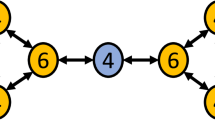Abstract
TRUE sociality has evolved in only two insect orders—the Hymenoptera (ants, bees and wasps) and the Isoptera (termites). The hymenopterans seem to have achieved social organisation on at least 11 independent occasions1; this seems to have been facilitated by their haplodiploid sex determination which predisposes them to evolution of a caste system based on altruism2. Among the termites, fundamental similarities of social adaptation and organisation indicate a monophyletic origin; but in the absence of haplodiploidy, the conditions in which eusociality has arisen remain obscure. I report here a reproductive polymorphism in tiny feather-winged beetles (family Ptiliidae) living in dead wood, in which winged females are super-reproductive. The parallel with the winged reproductives of termite societies is striking and to my knowledge has not previously been observed in a non-social insect. The selection pressures that resulted in this convergent evolution may reflect those with which the prototermite had to contend during early socialising stages. This may be a better model for the prototermite than the currently favoured blattoid Cryptocercus1. The model is, of course, entirely one of an analogy based on convergence; there is no suggestion that there is any phylogenetic link.
This is a preview of subscription content, access via your institution
Access options
Subscribe to this journal
Receive 51 print issues and online access
$199.00 per year
only $3.90 per issue
Buy this article
- Purchase on Springer Link
- Instant access to full article PDF
Prices may be subject to local taxes which are calculated during checkout
Similar content being viewed by others
References
Wilson, E. O. The Insect Societies (Harvard University Press, Cambridge, Massachusetts, 1971).
Hamilton, W. D. J. theor. Biol. 7, 1–52 (1964).
Southwood, T. R. E. Biol. Rev. 37, 171–214 (1962).
Hamilton, W. D. & Taylor, V. A. (in preparation).
Taylor, V. A. thesis, Univ. Lond. (1975).
Johnson, C. Entomologist's Gaz. 26, 211–223 (1975).
Goto, H. E. Entomologist's mon. Mag. 96, 138–140 (1960).
Dixon, A. F. G. Ent. exp. appl. 15, 335–340 (1972).
Krishna, K. in Biology of Termites II (ed. Krishna, K. & Weesner, F. M.) 127–152 (Academic, New York, 1970).
Author information
Authors and Affiliations
Rights and permissions
About this article
Cite this article
TAYLOR, V. A winged élite in a subcortical beetle as a model for a prototermite. Nature 276, 73–75 (1978). https://doi.org/10.1038/276073a0
Received:
Accepted:
Issue Date:
DOI: https://doi.org/10.1038/276073a0
This article is cited by
-
Fecundity in relation to wing-morph of three closely related species of the melanocephalus group of the genus Calathus (Coleoptera: Carabidae)
Oecologia (1991)
-
Adaptation, compromise, and constraint: the development, morphometrics, and behavioral basis of a fighter-flier polymorphism in male Hoplothrips karnyi (Insecta: Thysanoptera)
Behavioral Ecology and Sociobiology (1988)
-
The reproductive cycle of the queenless ant pristoMyrmex pungens
Insectes Sociaux (1984)
Comments
By submitting a comment you agree to abide by our Terms and Community Guidelines. If you find something abusive or that does not comply with our terms or guidelines please flag it as inappropriate.



